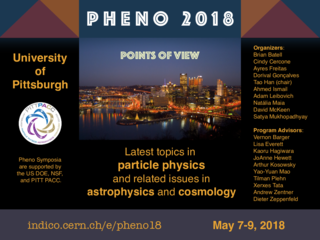Speaker
Description
Supernova 1987A provides strong constraints on dark-sector particles with masses below ~100 MeV. If such particles are produced in sufficient quantity, they reduce the cooling time of the supernova, in conflict with observations. We consider the resulting constraints on dark photons, sub-GeV dark matters coupled to dark photons, milli-charged particles and axions. For the first time, we include the effects of finite temperature and density in this environment, and we estimate the systematic uncertainties on the cooling bounds by varying temperature and density profiles of the proto-neutron star. Furthermore, our new treatment on particle trapping increases the upper bounds by an order of magnitude. In conclusion, our constraints exclude novel parameter spaces for sub-GeV dark matter, and for dark photons and axions differs significantly from previous work in the literature.
Summary
Supernova 1987A constraints on dark photons, dark fermion coupled to dark photons, milli-charged particles and axions.

